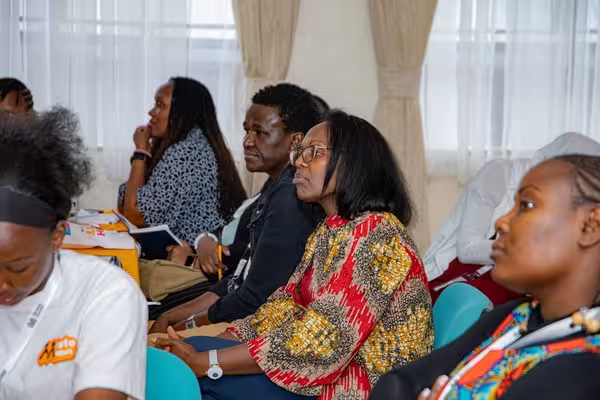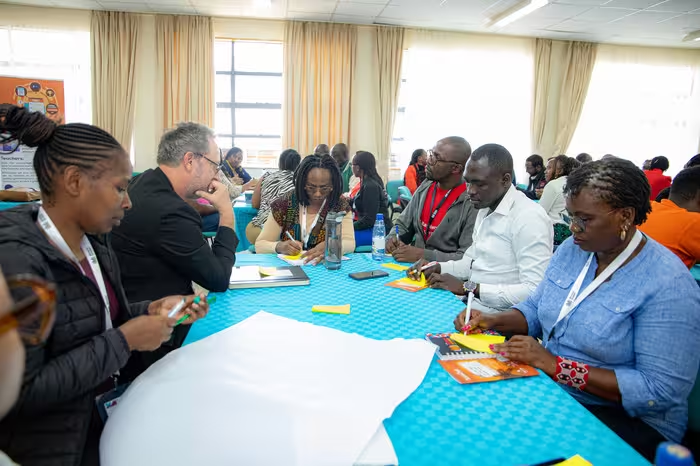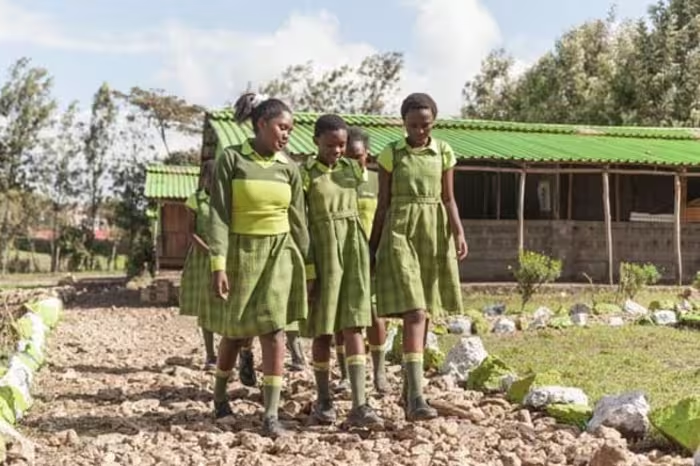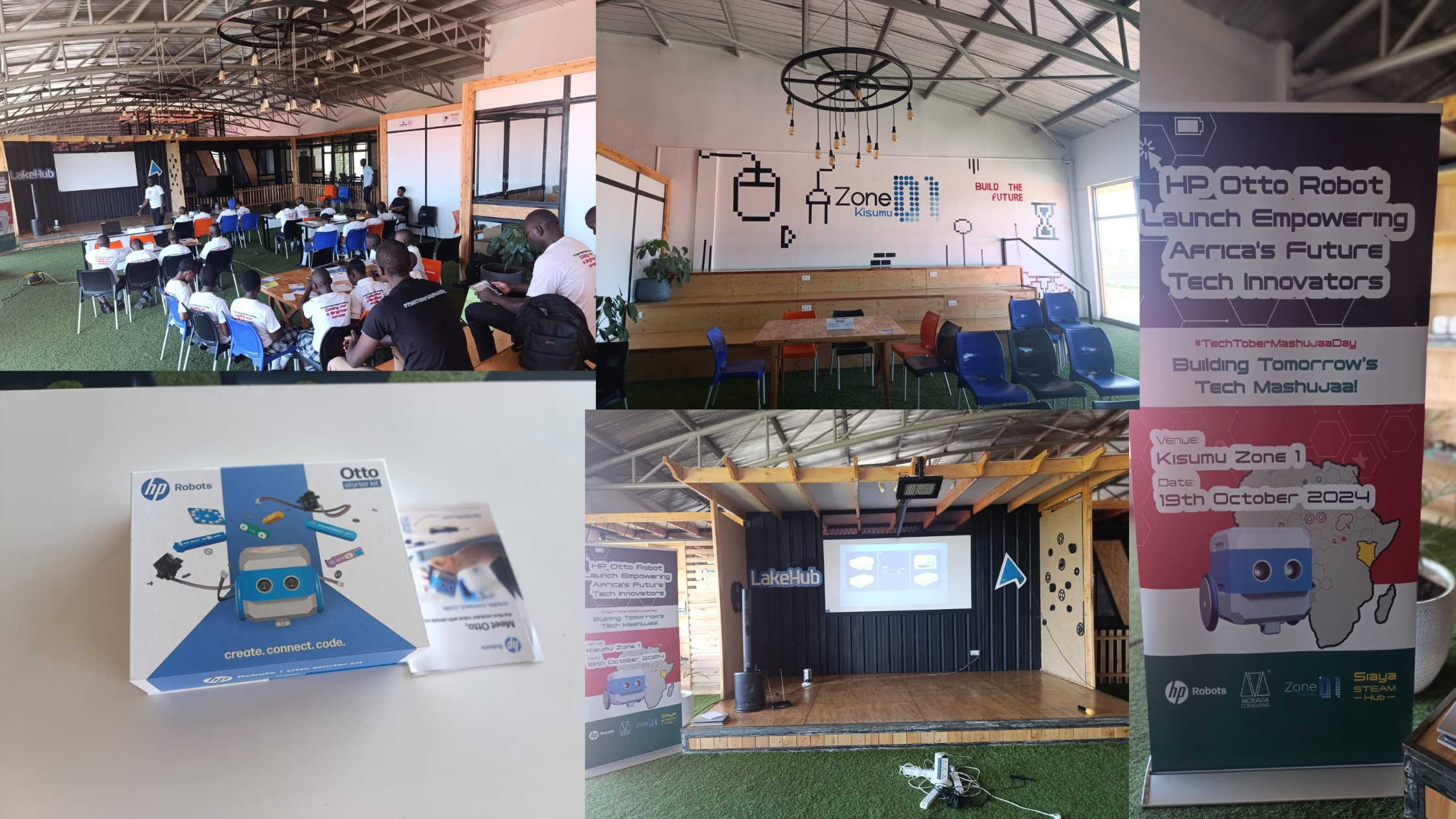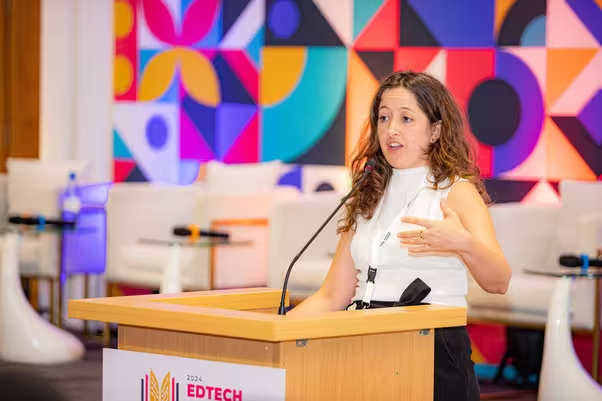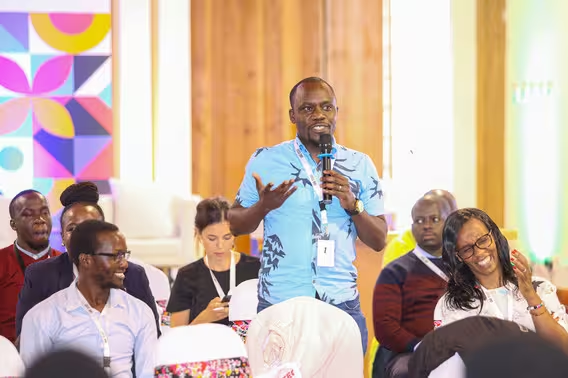
During the Kenyan edition of the 2024 EdTech Summit, one of the hot topics of discussion was the role of EdTech in emergencies. The moderator of this particular session was Ciku Mbugua of EdTech Hub. Ciku leads a portfolio of work in Kenya, which bridges the gap between research and ensuring the research gets in the right hands. One of the things EdTech Hub is thinking keenly about is how to leverage tech to continue learning during emergencies.
The panelists were Hannington Mwenda from Save the Children and Abdinoor Alimahdi, an educational technologist and founder of M-Lugha.
Hannington is an evangelist for education in emergencies. His work involves embedding technology education with thematic areas like nutrition and health as well as teacher professional development.
Abdinoor’s dream is to drastically increase literacy and numeracy levels in Northern Kenya. His app, M-Lugha, is making gigantic strides toward realizing that dream. It is used in 23 secondary schools in Northern Kenya. This small gadget contains Form 1 to 4 video lessons offline. It doesn’t need internet access; it is like a local LAN. Within a 100-meter radius when turned on, 100 users can access it. All the content is approved by the Kenya Institute of Curriculum Development (KICD).
Dire stats
Recently, the End Learning Poverty For All campaign at the AU pointed out a dire statistic: nine out of ten children in Africa are not reading and doing math at the right level. For a continent that has the most young population, this should be cause for concern.
The consolation is that this is an African figure, and our numbers as Kenya are not that bad. We might pride ourselves as the ones carrying the continent. But still. A lot remains to be done. And that’s taking into account that we are always in emergency mode; if it’s not flooding, it is protests or teacher strikes. Or, you-name-it. Which disrupts the academy calendar.
“COVID caused us to lose valuable time,” Ciku stated. “And now, any time now, we could be waiting for an emergency or another. So we can’t afford, and we also can’t afford to think that learning can only happen in school.”
So, what are stakeholders supposed to do? Think outside the box. Heck, scratch that. Think like there is no box. Either that or our learning and learners will always be at the mercy of unmitigated emergencies.
Thinking like there is no box
Save the Children has mastered the art of thinking like there is no box. Their job description is “sector of education in emergencies.” One of their biggest jobs involves getting children to school. This means understanding the full scope of education—all the enrollment to teachers, to parents, then to content itself—the learning content, and then to assessments.
“One of the biggest areas has been tracking enrollment,” Hannington said. “Tracking enrollment in two ways. Number one, first of all, getting children; when it’s an emergency, making sure we know how many children have been affected.
“And then there is the framework. You have all the area officers for education, who have the numbers of the various headteachers, and the headteachers have the parents’ numbers. So, that way, you’re able to quickly translate how many people are affected.”
From that feed, Save the Children can quickly and accurately process what percentage of learners are affected by an emergency and how many can access a digital device for continued learning. The next step is assessing what school calendar they are in. Were they nearing an assessment? Were they just opening school? Were they transitioning to a new year? Answering the above questions enables them to counteract emergencies—not with guesswork and guesstimation—but with accurate data and correct solutions.
Well, they are not called Save the Children for nothing.
Technopreneurship and emergencies
The sixty-four thousand dollar question is, How do you build an app that you know can be used at any time? Many edtech apps are designed for the teacher to use during normal times. However, during an emergency, children are either at home or, due to migratory lifestyles, they are in far-flung and often inaccessible places. Thus, teachers cannot be solely relied upon to ensure that education continues.
M-Lugha – whose motto, “First Language First,” aptly describes what they are doing, believes that every region has its own unique challenges and cookie-cutter solutions are a recipe for failure.
“We have a unique challenge and a solution that is not homegrown,” Abdinoor said. “And in most cases, you find solutions that are imported and normally brought to us, which most of the time doesn’t work for us.”
M-Lugha primarily serves the communities in North Eastern Kenya, which consists of eight counties. These share almost similar challenges. For starters, they have a culture whereby young learners don’t enroll first in a secular education but start, from a young age, at madrassas, which are Islamic-themed classes.
This presents a challenge in that a student who is approximately 15 years old can be in grade one or two, which causes apathy. Eventually, they’ll drop out because they will not feel they have the skills. When M-Lugha Techies were developing their app, they considered such issues, as well as the language of instruction and cultural sensitivity. They also made sure the app was offline because of the issue of internet connectivity, besides the fact that their device is self-learning. This means learners do not necessarily need teachers to help them navigate the device. Everything is localized inside the app, which makes it easy to interact with and does away with the fear of gadgets that some people may have.
“This was a home-grown solution, and there’s no need for developing a solution for a community that you know obviously will be challenged,” Abdinoor pointed out. “Because we had a challenge with power, we also introduced solar-charged tablet devices.”
Cyclic emergencies
Is it an emergency if it is cyclic? Is it an emergency if we know it will happen yet we do not prepare for it until it comes crashing in?
“If floods catch you flat-footed, as a country, we have a problem,” Hannington said. “There are indicators for such things as droughts and floods. As such, there should be a dissemination framework for that information to get to teachers, learners, and parents.”
Even with that information, a preparedness plan should be done by the people on the ground—the folks who wear the shoes and know where it pinches—as contexts are different from one part of the country to another.
That’s why it’s important to have EdTech conversations regularly so players in the EdTech space can come up with different preparedness plans and not wait until an emergency has happened to start planning.
“If we’re going to get a method of dealing with education when there’s an emergency, then it’s got to fit in with that specific place,” Hannington concurred. “But, unfortunately, we’re not learning. We’re not learning from all these mistakes that keep happening.”
It’s all about anticipating emergencies, having all systems in place, and activating them if and when there is a need. It’s also about continuous monitoring and evaluation of such systems and drills to keep them always well-oiled and ready for any eventuality. Even the dams in the Netherlands went through many years of being tested by flood waters and being re-engineered to ensure they worked to perfection.
Infrastructure and partnerships
Proper infrastructure is the difference between a preparedness plan working during emergencies and a plan not working. Sadly, the issue of infrastructure is a thorn in the flesh for many players in the EdTech space.
The flip side is that whereas some areas and schools lack the most basic infrastructure, there are schools with resources that have remained unutilized for many years.
“Sometime back we did an episode on the implementation of the Digital Literacy Program,” Ciku said. “I remember we traveled far and wide, and you can’t believe the tablets we found in very remote schools. Sometimes even the number of tablets exceeds the number of enrolments.”
This is where political will and partnerships come in. The reason why Abdinoor is able to do what he is doing is because of the Frontier Counties Development Council (FCDC).
FCDC is an impactful organization and has good relations with county governments in the Northeastern province. When they speak, the counties listen.
Having such partners in one’s corner makes speaking to county governments less daunting.
Formulating a rapid response protocol
Formulating a rapid response protocol is not rocket science. One needs to answer several questions, though. Can you design a protocol to rapidly deploy your solution or your intervention when disruption occurs? What’s the first thing you would do? What are the support systems? What are the things you need to be in place to address the challenges that may arise?
Once you have your response plan, you must ensure it ticks at least three boxes. One, ensure it works. Two, ensure it has the requisite support systems. Three, ensure it can be sustained and scaled. Number three includes making sure it can be sustained over long-term disruptions and that it can be scaled to include new users.
For instance, if tomorrow the government announces there is a shutdown because of the outbreak of monkeypox, what’s the first thing you will do? How do we deploy the solution, and how do we ensure that the support around it works to perfection?
Scaling up a rapid response protocol
Scaling a response protocol can be done by breaking down the silo mentality and building cross-cutting partnerships. It can also be done by getting rid of the competition mentality and getting more in collaboration mode.
By leveraging each other’s networks and strengths to create stronger and far-reaching solutions. For as they say, if you want to travel fast, run alone, but if you want to travel further, run with others. The grass is always enough for everyone, but only if players allow others to graze in each other’s pastures and whet their thirst in each other’s wells.
Collaborations happen when there is trust. And trust takes tons of time to build. But once that happens and the whole ecosystem is built, stakeholders can feed each other and celebrate each other’s successes.
All this can be done if everyone trains their lens on one goal. And, in this case, the goal is getting our children to learn. That’s the primary goal. All other things are secondary. That’s the non-negotiable profit. The other monetary rewards that may come are only the icing on the cake.
Conclusion
Will we have emergencies? Absolutely. You can bet your bottom dollar on that. Will we always be prepared? That should be our goal. It’s better to be prepared with a wet blanket to meet a fire than to only have twiddling fingers. Will our plans always work like a dream? Nope. Even the best systems are fraught with snafus. C’est la vie.
But we must keep all hands on deck. We must make concerted efforts, individually and collectively, to ensure that we meet emergencies—not with knee-jerk reactions—but with concrete actionable plans that can be deployed at the touch of a button. Then and only then will we help increase foundational literacy and numeracy levels.
